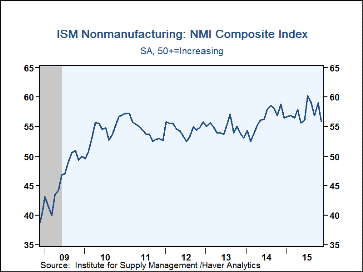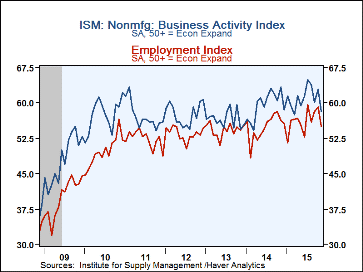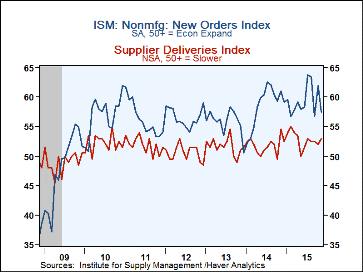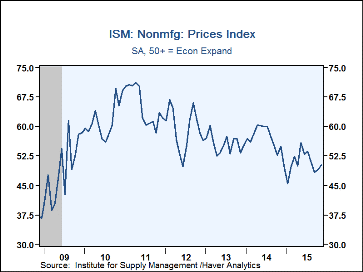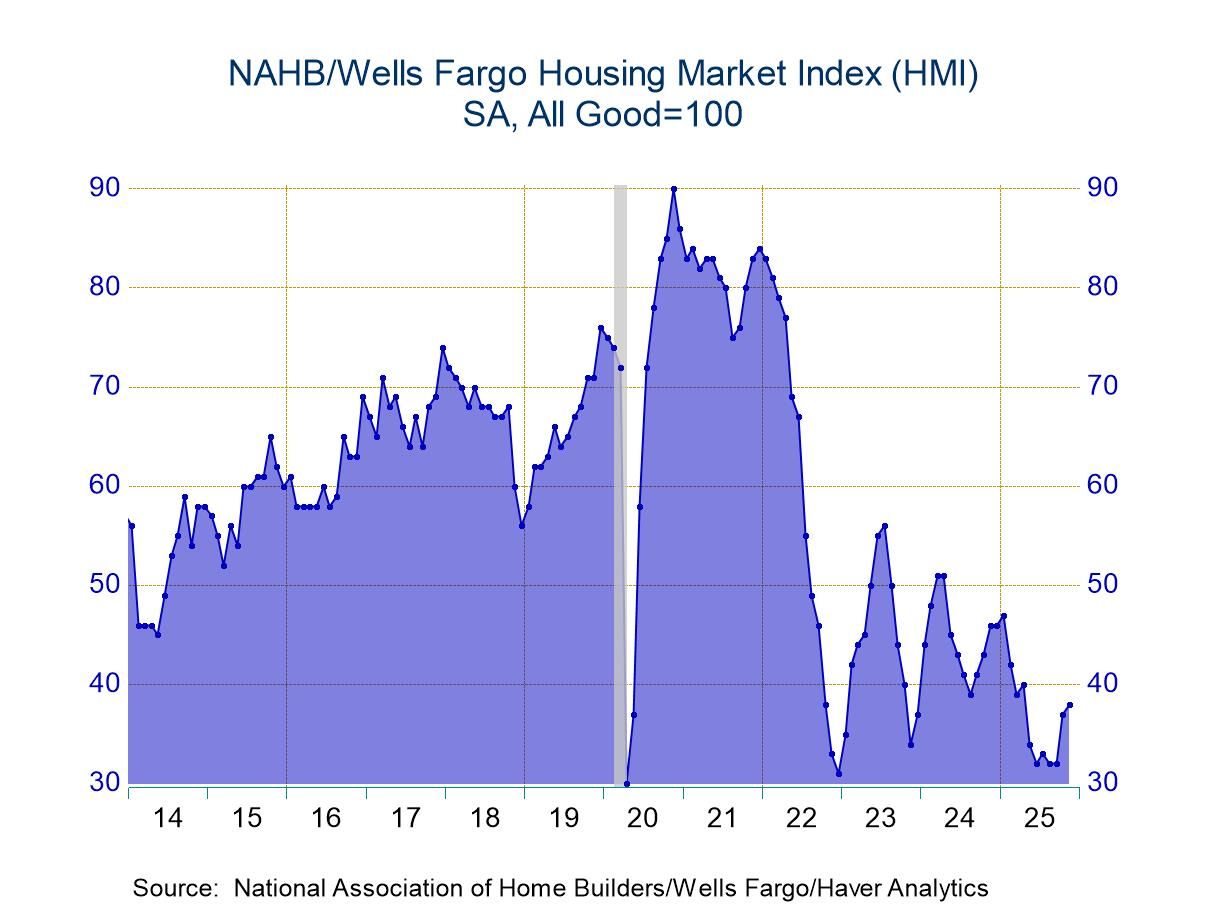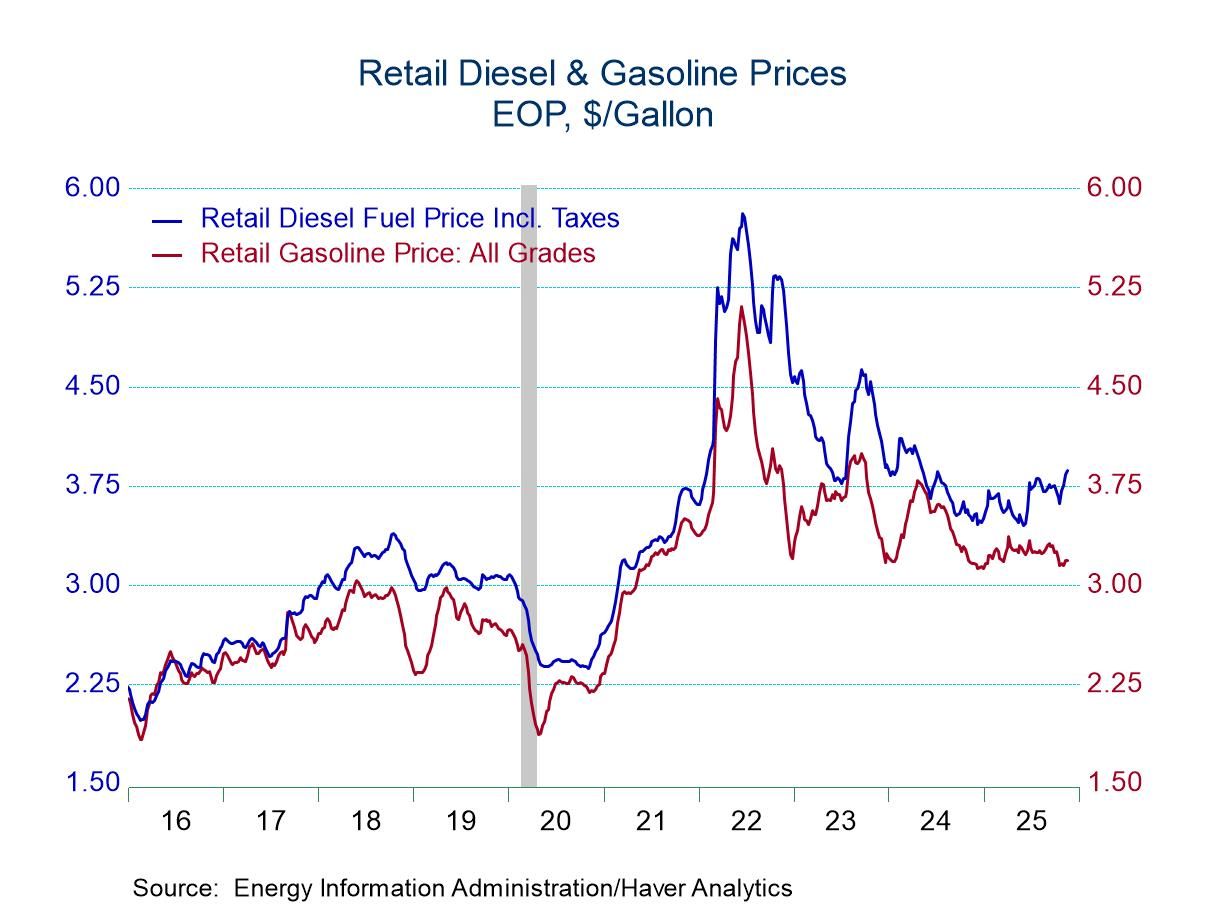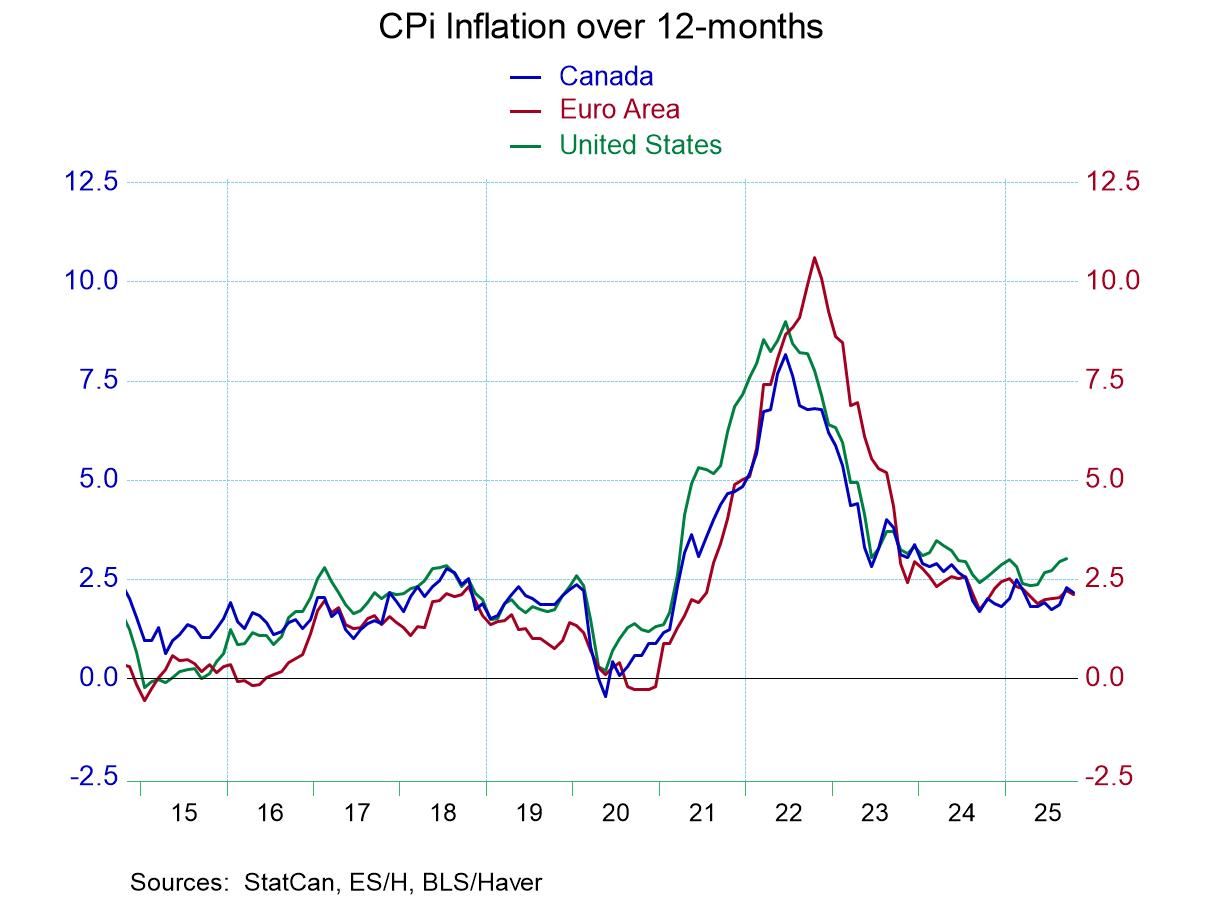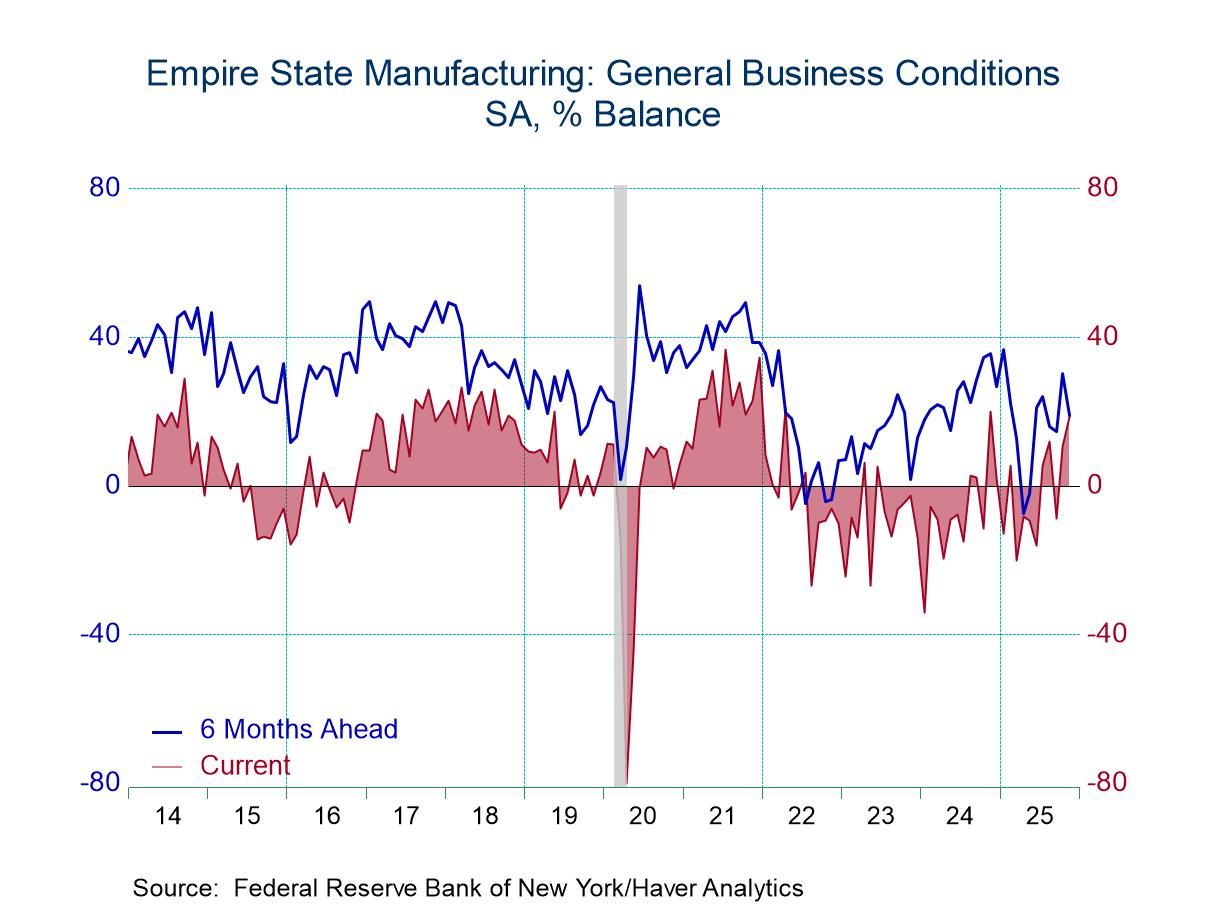 Global| Dec 03 2015
Global| Dec 03 2015U.S. ISM Nonmanufacturing Index Declines to 6-Month Low
by:Tom Moeller
|in:Economy in Brief
Summary
Improvement in service sector business activity slowed substantially during November. The Institute for Supply Management (ISM) Composite Index of Nonmanufacturing Sector Business fell sharply to 55.9 and reversed the unrevised [...]
Improvement in service sector business activity slowed substantially during November. The Institute for Supply Management (ISM) Composite Index of Nonmanufacturing Sector Business fell sharply to 55.9 and reversed the unrevised October increase to 59.1. It was the lowest level since May. Consensus expectations had been for a lesser decline to 58.0 in the Action Economics Forecast Survey. The ISM data are diffusion indexes where a reading above 50 indicates expansion.
Haver Analytics constructs a Composite Index using the nonmanufacturing ISM index and the ISM factory sector measure released Tuesday. It fell sharply to 55.0, also a 6-month low. During the last ten years, there has been a 73% correlation between the index and the q/q change in real GDP.
The decline in the nonmanufacturing index reflected shortfalls in most component series. The business activity reading fell to 58.2, its lowest reading since March. The employment index also declined to 55.0, a five-month low. During the last ten years, there has been a 96% correlation between the employment index and the m/m change in service plus construction payrolls. The new orders index fell to 57.5, reversing most of the prior month's increase. Working the other way, the supplier delivery series improved to 53.0 and indicated the slowest delivery speeds since July.
The prices paid series improved slightly to a roughly break-even level of 50.3. It followed two months below 50. Nine percent (NSA) of respondents paid higher prices while 16 percent paid less.
The export order series (NSA) declined to its lowest level since April as imports also eased. The inventory series recovered two months of decline.
The figures are available in Haver's USECON database. The expectations figure from Action Economics is in the AS1REPNA database.
| ISM Nonmanufacturing Survey (SA) | Nov | Oct | Sep | Nov'14 | 2014 | 2013 | 2012 |
|---|---|---|---|---|---|---|---|
| Composite Diffusion Index | 55.9 | 59.1 | 56.9 | 58.8 | 56.3 | 54.6 | 54.6 |
| Business Activity | 58.2 | 63.0 | 60.2 | 63.4 | 59.7 | 56.7 | 57.6 |
| New Orders | 57.5 | 62.0 | 56.7 | 61.0 | 58.6 | 55.8 | 56.5 |
| Employment | 55.0 | 59.2 | 58.3 | 56.3 | 54.9 | 54.3 | 53.5 |
| Supplier Deliveries (NSA) | 53.0 | 52.0 | 52.5 | 54.5 | 51.8 | 51.7 | 50.6 |
| Prices Index | 50.3 | 49.1 | 48.4 | 55.0 | 56.8 | 55.6 | 59.3 |
Tom Moeller
AuthorMore in Author Profile »Prior to joining Haver Analytics in 2000, Mr. Moeller worked as the Economist at Chancellor Capital Management from 1985 to 1999. There, he developed comprehensive economic forecasts and interpreted economic data for equity and fixed income portfolio managers. Also at Chancellor, Mr. Moeller worked as an equity analyst and was responsible for researching and rating companies in the economically sensitive automobile and housing industries for investment in Chancellor’s equity portfolio. Prior to joining Chancellor, Mr. Moeller was an Economist at Citibank from 1979 to 1984. He also analyzed pricing behavior in the metals industry for the Council on Wage and Price Stability in Washington, D.C. In 1999, Mr. Moeller received the award for most accurate forecast from the Forecasters' Club of New York. From 1990 to 1992 he was President of the New York Association for Business Economists. Mr. Moeller earned an M.B.A. in Finance from Fordham University, where he graduated in 1987. He holds a Bachelor of Arts in Economics from George Washington University.


